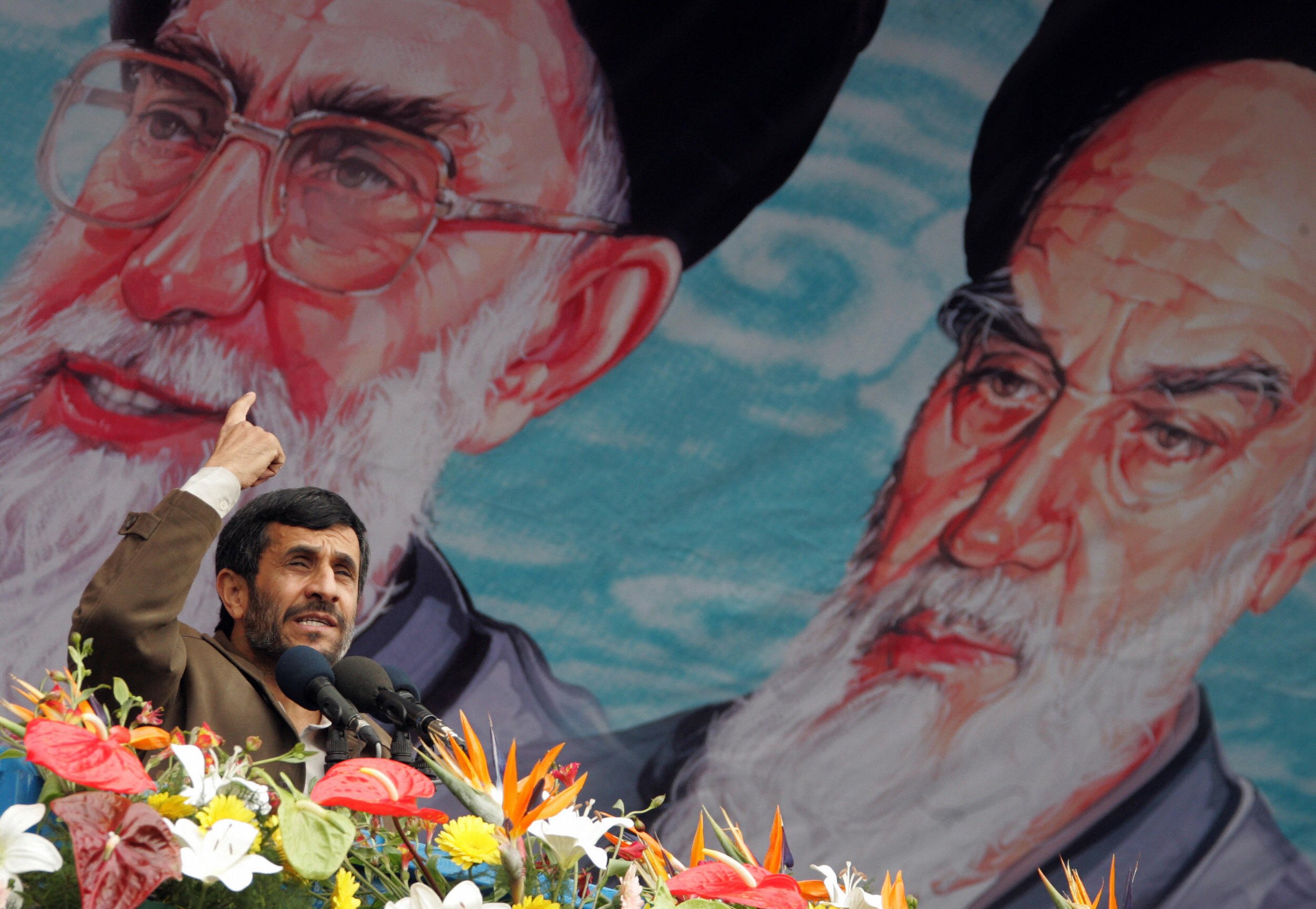The Iranian politician, Mahmoud Ahmadinejad served as the sixth President of Iran from 2005 until 2013. During his tenure in office, Ahmadinejad pursued hardline policies and was a controversial figure particularly due to his views and policies on the Holocaust, human rights, and his nuclear program.
Editor's Notes: Mahmoud Ahmadinejad: Former President Of Iran published today date by our team. We all know this topic is important to read to know about this person and how he was as the sixth President of Iran.
To help understand Mahmoud Ahmadinejad: Former President Of Iran. We put together this Mahmoud Ahmadinejad: Former President Of Iran guide. It includes information about his early life, political career, and his presidency. With this information, you can learn about Mahmoud Ahmadinejad: Former President Of Iran and his significance in Iranian history.
Key differences or Key takeways
Transition to main article topics
FAQ
This FAQ section provides answers to common inquiries and misconceptions regarding Mahmoud Ahmadinejad, former President of Iran.
.jpg)
ArabSaga: Iran: "Ahmadinejad arrested, quizzed and released” - Source arabsaga.blogspot.com
Question 1: What were Ahmadinejad's key policies?
Ahmadinejad's administration pursued policies characterized by economic populism, social conservatism, and anti-Americanism in foreign relations.
Question 2: Was Ahmadinejad a controversial figure?
Yes. His presidency was marked by domestic and international controversies, including suppression of dissent, nuclear development, and inflammatory rhetoric.
Question 3: What was Ahmadinejad's stance on Israel?
He was a vocal critic of Israel and questioned the Holocaust. His statements were widely condemned as anti-Semitic.
Question 4: Is Ahmadinejad still politically active?
After leaving office, he remained involved in Iranian politics. In 2021, he announced his candidacy for the presidency but was disqualified.
Question 5: What is Ahmadinejad's legacy?
Ahmadinejad's presidency had a significant impact on Iran, both domestically and internationally. His policies had polarizing effects, and his legacy remains a subject of debate.
Question 6: Can you provide any additional information on Mahmoud Ahmadinejad?
To explore further details and latest developments, refer to the biography of Mahmoud Ahmadinejad: Former President Of Iran here.
Tips
In his tenure as President of Iran, Mahmoud Ahmadinejad emphasized the importance of economic development, social justice, and global peace.
Tip 1: Prioritize Economic Growth and Diversification
To foster economic stability and reduce dependence on oil revenues, Iran needs to promote non-oil industries, such as manufacturing, agriculture, and tourism.
Tip 2: Ensure Social Welfare and Equity
The government must implement policies that guarantee basic necessities, healthcare, and education for all citizens, especially the marginalized and vulnerable.
Tip 3: Promote International Cooperation
Iran should engage in constructive dialogue with other nations and strive for peaceful resolutions to regional conflicts.
Tip 4: Respect Cultural Diversity
Recognizing and preserving the rich cultural heritage of Iran and its diverse ethnic groups fosters national unity and promotes a sense of belonging.
Tip 5: Promote Environmental Sustainability
Iran faces environmental challenges such as water scarcity and pollution. Implementing sustainable practices and investing in renewable energy sources is crucial for long-term prosperity.
Tip 6: Invest in Education and Youth Development
A well-educated and skilled population is essential for Iran's economic and social progress. Investing in quality education at all levels empowers youth and ensures a brighter future.
These principles provide a roadmap for Iran to achieve economic prosperity, social well-being, and a more prominent role in the international community.
Mahmoud Ahmadinejad: Former President Of Iran
Mahmoud Ahmadinejad, the former President of Iran, held office from 2005 to 2013. His presidency was marked by several key aspects:
- Conservative Ideology: A staunch conservative, Ahmadinejad promoted traditional values and opposed Western influence.
-

Mahmoud Ahmadinejad is on Twitter to distract from his human rights - Source slate.com - Nuclear Controversy: Iran's nuclear program became a major issue during his presidency, leading to international tensions.
- Economic Policies: Ahmadinejad implemented populist economic policies, including subsidies and cash transfers, which had mixed results.
- Anti-Western Stance: He took a strong anti-Western stance, criticizing the United States and Israel.
- International Diplomacy: Ahmadinejad played a significant role in international diplomacy, seeking to expand Iran's regional influence.
- Controversial Rhetoric: His presidency was characterized by controversial rhetoric, particularly his denial of the Holocaust.
These aspects highlight the complex and multifaceted nature of Ahmadinejad's presidency, which had a profound impact on Iran and the broader Middle East.
Mahmoud Ahmadinejad: Former President Of Iran
Mahmoud Ahmadinejad, Iran's former president, served from 2005 to 2013. His presidency was marked by controversial statements and policies, particularly regarding Iran's nuclear program and its relations with the West. Ahmadinejad's stance against Israel and his denial of the Holocaust drew international condemnation.

Iran's Supreme Leader Deals Blow to Ahmadinejad's Chances of - Source www.newsweek.com
Ahmadinejad's presidency was also characterized by economic challenges and political repression. His policies led to high inflation and unemployment, and he cracked down on political dissidents. Despite these challenges, Ahmadinejad's populist rhetoric and anti-Western stance resonated with many Iranians, who saw him as a champion of the poor and oppressed.
Ahmadinejad's legacy remains complex and contested. He is both praised and criticized for his policies and statements. His presidency was a transformative period in Iranian history, and his impact continues to be felt today.
Table: Key Insights on Mahmoud Ahmadinejad's Presidency
| Issue | Ahmadinejad's Policy | Impact |
|---|---|---|
| Nuclear Program | Pursuit of uranium enrichment | Increased tensions with the West, sanctions |
| Relations with the West | Anti-American rhetoric, Holocaust denial | Diplomatic isolation, economic sanctions |
| Economic Policy | Populist measures, price subsidies | High inflation, high unemployment |
| Political Repression | Crackdown on dissidents, media censorship | Suppression of political freedoms |
Conclusion
Mahmoud Ahmadinejad's presidency was a period of significant change and controversy for Iran. His policies and statements had a profound impact on the country's domestic and international standing. Ahmadinejad's legacy remains complex and contested, but his presidency undoubtedly left a lasting mark on Iranian history.
Ahmadinejad's presidency serves as a reminder of the challenges and complexities of governance in the 21st century. His policies highlighted the tensions between economic development, political stability, and international relations. His legacy continues to be debated, and his impact on Iran will continue to be felt for years to come.
